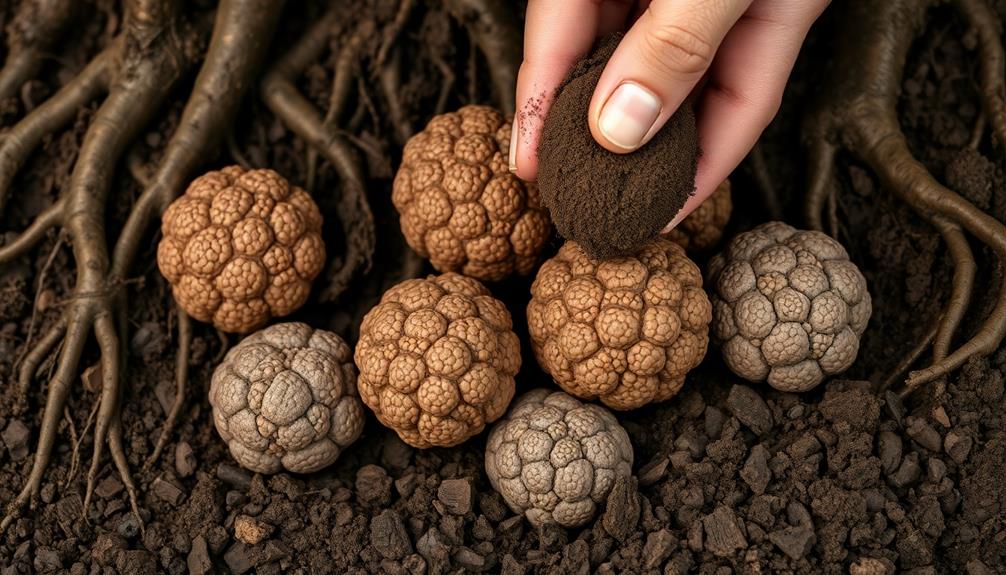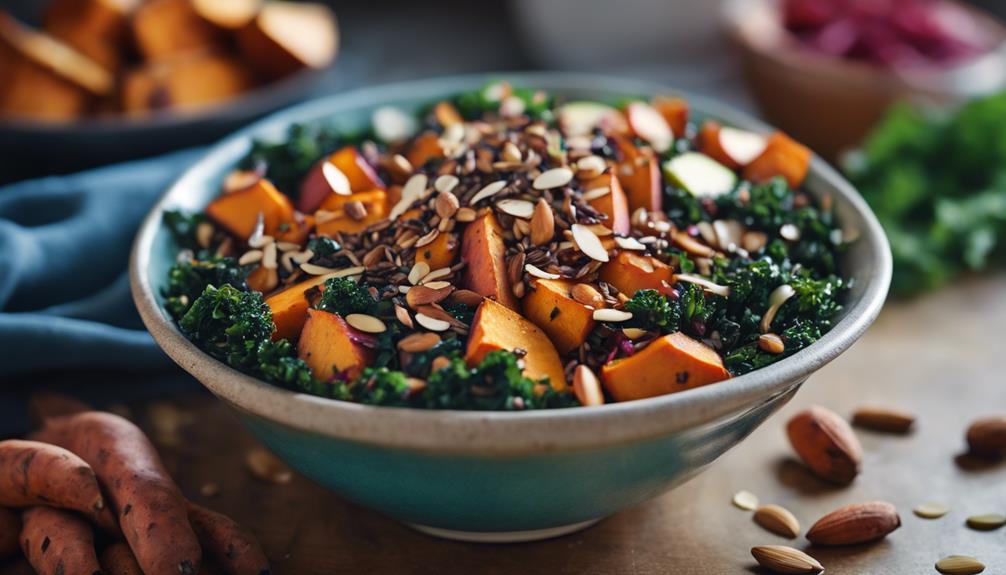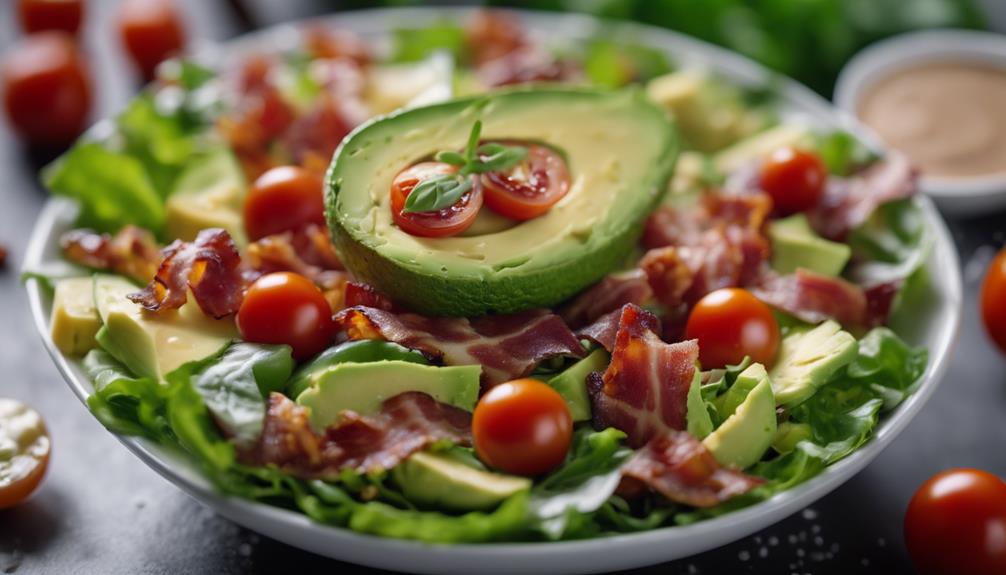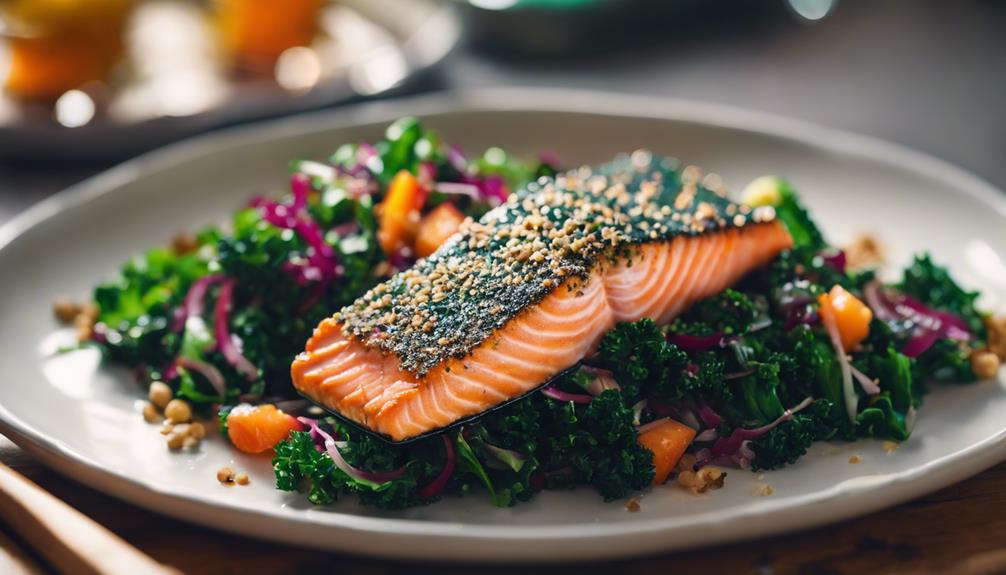Truffles are pricey for several reasons. To begin with, they're rare and grow only in specific regions alongside particular trees, making them hard to find. Most truffles are found in the wild, adding to their scarcity. The harvesting process is also labor-intensive; specially trained dogs or pigs are needed to sniff them out. Plus, truffles have a short shelf life of about a week, driving up costs as they must be transported quickly. Seasonal demand makes their prices rise even more. Curious about what influences their market trends even further? There's more to explore about these gourmet delicacies.
Key Takeaways
- Truffles are rare fungi that grow in specific regions and require particular tree roots, making them difficult to cultivate.
- The labor-intensive harvesting process involves trained animals to locate truffles, increasing overall production costs.
- With a short shelf life of about one week, truffles must be transported quickly to maintain freshness.
- Seasonal availability leads to price spikes, especially for white truffles, which can cost up to $4,000 per pound.
- Climate change is threatening truffle production, contributing to their increasing scarcity and high market prices.
Definition and Characteristics of Truffles

Truffles, a fascinating type of underground fungus from the genus Tuber, grow in association with the roots of specific trees like oaks and hazels. These unique fungi come in various forms, with black truffles (Tuber melanosporum) and white truffles (Tuber magnatum) being the most prized. Their lumpy, irregular shapes and colors, ranging from black and brown to white, add to their allure.
In many ways, truffles can be compared to ingredients used in Brazilian cuisine, where the emphasis on unique flavors and seasonal ingredients is paramount.
What makes truffles truly special is their intense aroma and distinct flavor profiles that include earthy, nutty, and umami notes. This unique taste elevates dishes, making them a sought-after ingredient in gourmet cuisine.
However, the conditions required for truffle growth are quite specific, and they're seasonal. For instance, black truffles are typically harvested from November to March, while white truffles are available from October to January.
Despite there being thousands of truffle species, only a select few are edible and commercially valuable, contributing to their rarity. This scarcity, combined with the labor-intensive process of locating and harvesting them, is why truffles are considered expensive.
Types of Truffles

When exploring the types of truffles, you'll quickly notice that black truffles are prized for their rich, earthy flavor, especially those from France.
These luxurious fungi can elevate dishes like Red-Braised Pork Belly by adding an exquisite depth of flavor.
On the other hand, white truffles stand out for their intense aroma and rarity, making them the most expensive option.
Understanding these characteristics can help you appreciate the unique qualities of each type.
Black Truffles Overview
Often sought after for their unique flavors, black truffles, particularly Tuber melanosporum, stand out in the culinary world. Known for their rich earthy flavor, these prized fungi are primarily harvested in France from November to March. Their distinct aroma and complex taste profile make them a favorite among chefs, especially when paired with dishes like Yeduba Wat that showcase rich gastronomic heritage.
However, the price of fresh truffles can be quite high due to several factors:
- Limited Growing Season: Black truffles are only available for a few months each year, which drives up demand.
- Labor-Intensive Harvesting: Harvesting requires trained dogs or pigs since these truffles grow underground, making the process more costly.
- Specific Environmental Needs: They thrive near certain tree roots and require particular soil conditions, limiting where they can be cultivated.
While the Burgundy truffle (Tuber uncinatum) serves as a less expensive alternative, black truffles remain the gold standard in gastronomy. The combination of their rarity and the meticulous effort involved in gathering them solidifies their status as a luxury food item, making them a coveted addition to gourmet dishes worldwide.
White Truffles Characteristics
Renowned for their intense aroma and flavor, white truffles, particularly Tuber magnatum, are the epitome of luxury in the truffle world. These exquisite fungi are primarily harvested in northern Italy, especially in the Piedmont region, during a short season from October to December. Their rarity plays a significant role in their high price, often reaching up to $4,000 per pound.
This region is also celebrated for its rich culinary heritage, including dishes like braised beef in Barolo wine, which complements the luxurious nature of truffles.
Unlike black truffles, white truffles can't be cultivated, which adds to their allure. This inability to farm them means that chefs and food enthusiasts highly seek them out, driving demand in gourmet cuisine. Freshness is key; these truffles are best enjoyed raw, as cooking can diminish their delicate flavor.
You'll often find them shaved over dishes like pasta and risotto, allowing their unique taste to shine.
While other varieties, like Bianchetti (Tuber borchii) and Oregon white truffles (Tuber oregonese), exist, they don't hold a candle to Tuber magnatum regarding flavor or market value. This distinction underscores why white truffles command such a high price in the culinary world.
Factors Contributing to High Cost

Truffles are costly for several reasons, primarily tied to their unique growing conditions and the labor-intensive harvesting process. These factors contribute to the high truffle price you often see in gourmet shops and restaurants.
Here are three key reasons why truffles are so rare and expensive:
1. Specific Growing Conditions: Truffles thrive in particular climates and soil types, mainly found in regions like France and Italy. This limited availability makes them rare and challenging to cultivate.
Additionally, similar to how certain ingredients like nettles flourish in specific seasons, truffles also have a narrow window for ideal growth.
2. Labor-Intensive Harvesting: Finding truffles requires trained dogs or pigs to dig them up from underground. This meticulous harvesting process demands time and skill, considerably adding to the overall cost.
Just as the slow-cooked preparation of dishes like pork belly showcases the effort involved in gourmet cooking, truffle harvesting reflects a similar dedication.
3. Short Shelf Life: Truffles typically last only about a week, which means they need quick transportation and careful handling. This short shelf life limits distribution and increases their price, especially since seasonal availability can cause prices to spike during peak harvesting months.
These factors combined make truffles not just a culinary delight but also a luxury item, reflecting the dedication and resources involved in bringing them to your table.
Truffle Rarity and Harvesting

The rarity of truffles stems from their unique growing conditions and the complexities of their harvesting. Truffles form symbiotic relationships with specific tree roots, primarily oak and hazel, making them difficult to locate. This underground growth means you can't simply spot them; you rely on trained dogs or pigs, known as truffle hunters, to sniff them out. This labor-intensive process adds to their rarity and increases their cost.
Just like the traditional Muamba De Galinha in Angolan cuisine, which showcases intricate cooking methods and cultural significance, truffle harvesting also demands a deep understanding of the environment and technique.
Moreover, truffles have unpredictable growth patterns and specific environmental requirements, limiting their cultivation to select regions in Europe and parts of the U.S. Their short growing season, typically lasting only a few months each year, contributes considerably to their scarcity.
Approximately 90% of truffles are collected from the wild, as commercial farming remains challenging and often yields lower quality compared to wild-harvested varieties.
This combination of factors—unique growth conditions, the skill of truffle hunters, and the limited time frame for harvesting—creates a perfect storm of rarity, making truffles a sought-after delicacy that commands high prices in the market.
The Economics of Truffles

In the world of gourmet food, few ingredients can match the high price tag of truffles, driven by their rarity and complex harvesting process. These delicacies are expensive for several reasons, primarily tied to their unique growth conditions and the effort required to harvest them.
Similar to how Indonesian desserts like Kue Putu rely on specific ingredients and labor-intensive methods, truffles also require a meticulous approach to cultivation and harvesting.
Here are three key factors that affect the economics of truffles:
- Rarity: Truffles grow underground in specific environments, forming symbiotic relationships with certain trees. This makes finding them a challenge.
- Labor-Intensive Process: Harvesting requires trained dogs or pigs to locate the truffles, adding significant costs to the overall production and market price.
- Short Shelf Life: Truffles are highly perishable, demanding quick transportation and limiting the time they can be sold.
These factors contribute to a fluctuating market price, especially during festive periods when demand spikes.
White truffles, for example, can reach prices up to $4,000 per pound. With global demand projected to push the market beyond $6 billion in the coming decade, the economics of truffles will continue to reflect their scarcity and the effort needed to bring them to your plate.
Culinary Uses and Enjoyment

Gourmet chefs and home cooks alike cherish truffles for their ability to elevate dishes with rich, complex flavors. Their culinary uses are diverse, enhancing everything from pasta to risotto and meats.
For those looking to incorporate festive flair into their gatherings, consider serving truffle-infused dishes alongside creative snacks like Graveyard Taco Dip or other themed treats. The intense umami profile of truffles adds a depth that's hard to replicate. You'll find black truffles, with their earthy flavor and nutty undertones, offering a bold taste, while white truffles provide a more delicate aroma that's equally enticing.
To fully enjoy truffles, it's best to use them fresh and immediately, capturing their aromatic qualities. You can infuse their flavors into eggs or oils simply by storing them together.
When serving, shave truffles over your dish just before it's plated; this guarantees you get maximum flavor impact, as prolonged cooking can diminish their distinctive taste.
Incorporating truffles into your cooking not only elevates simple dishes but also transforms them into luxurious experiences.
Whether you're crafting a gourmet meal or just want to indulge in a special treat, the unique truffles flavor adds an unmatched quality that's worth the investment. Enjoy the culinary journey that truffles bring to your table!
Climate Change and Sustainability

Truffle lovers face an unsettling reality as climate change poses a significant threat to truffle production. The specific soil and climate conditions that truffles require are becoming increasingly difficult to maintain.
Much like the delicate balance needed for the growth of Mushroom Masala, the decline in truffle production is also alarming. With the drastic decline in production—from over 1,000 tonnes in the 19th century to just 30 tonnes today—the impact is undeniable. Rising temperatures and shifting precipitation patterns disrupt the delicate ecosystems essential for truffle growth.
To address these challenges, consider the following sustainable practices:
- Conservation Efforts: Protecting existing habitats and restoring degraded areas can help maintain the delicate balance necessary for truffles to flourish.
- Sustainable Farming: Implementing eco-friendly farming techniques not only preserves the environment but also guarantees the long-term viability of truffle cultivation.
- Awareness and Education: Increasing public awareness about climate change's effects on truffle availability is imperative for future sustainability initiatives.
Truffle Prices and Market Trends
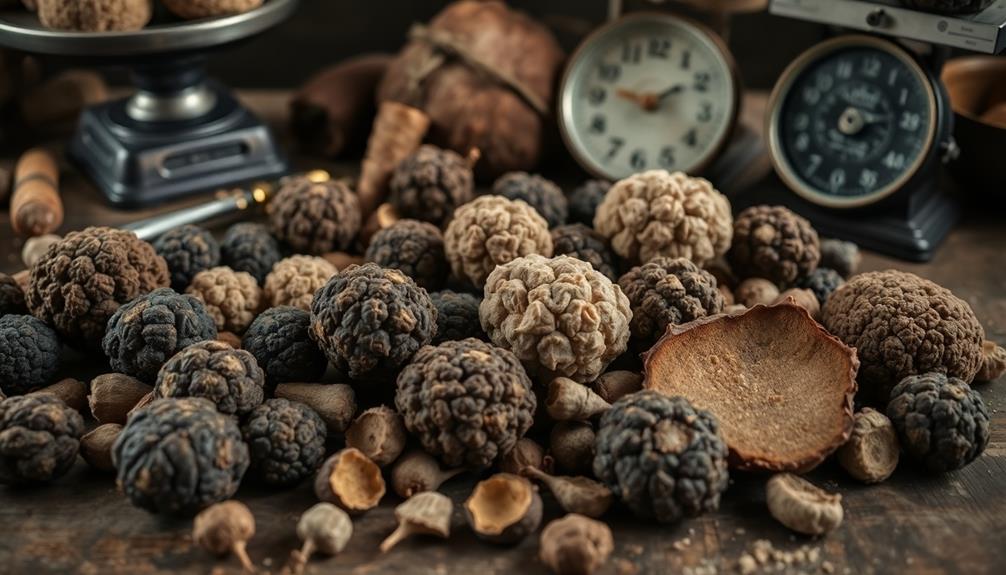
How do truffle prices reflect the complexities of supply and demand? The market for truffles can be quite volatile, with prices influenced by species, quality, and seasonal availability. For instance, white truffles can soar to around $3,300 per pound, while black truffles typically settle around $900. This price disparity highlights the rarity and desirability of different truffle types.
Notably, just like the traditional Mexican dish tamales, which are made with diverse fillings and showcase a variety of flavors, truffles also offer a unique taste experience that can elevate any culinary creation.
As you explore the truffle market, you'll notice larger truffles often command higher prices. For culinary use, a recommended quantity is 5-10 grams for white truffles and 10-15 grams for black truffles. Seasonal demand spikes during festive periods, pushing truffle prices even higher as consumers seek luxury items for special occasions.
Moreover, economic factors like climate change greatly impact truffle yields. The labor-intensive process of harvesting truffles adds another layer to their cost, making them a true delicacy.
With the global truffle market projected to exceed $6 billion in the next decade, you can expect these trends to continue, driven by a growing appetite for gourmet culinary experiences.
Cheaper Alternatives to Truffles

For those looking to indulge in truffle flavors without breaking the bank, several alternatives can deliver that sought-after taste. You don't have to spend a fortune on fresh truffles to elevate your dishes.
Here are three budget-friendly options to evaluate:
- Truffle Oil: This oil is often made by infusing oil with synthetic chemicals that mimic truffle aroma. It's perfect for drizzling over pasta, salads, or popcorn to enhance the flavor without the hefty price tag.
- Truffle Salt: A combination of sea salt and either truffle pieces or oil, truffle salt makes for a flavorful seasoning. Sprinkle it on vegetables, meats, or even popcorn to add a gourmet touch to your meals.
- Black Garlic: With its sweet, umami-rich flavor, black garlic serves as a fantastic substitute for truffles. Use it in sauces or spreads to achieve depth without the cost.
Additionally, sautéed mushrooms like porcini or shiitake can mimic the earthy notes of truffles, providing another affordable avenue to explore.
These alternatives allow you to savor truffle-like flavors while staying within budget.
Frequently Asked Questions
What's so Special About Truffles?
Truffles are unique because they offer an unparalleled flavor profile, enhancing dishes like pasta and risotto. Their rarity and the elaborate process of finding them make you appreciate each bite even more.
What Does Truffle Taste Like?
Ever wondered what truffles taste like? Their earthy, musky flavor captivates your palate, with black truffles offering a robust nuttiness and white truffles delighting you with subtle sweetness and complex notes, enhancing every dish they grace.
How Much Is 1 Kg of Truffles?
If you're curious about truffle prices, expect to pay between €500 and €4,000 per kilogram. The exact cost depends on the type, quality, and season, so prices can vary considerably throughout the year.
What Are Truffles Made Of?
Imagine nature's hidden treasure—truffles. They're composed of mycelium intertwined with tree roots, boasting water, carbohydrates, proteins, and unique organic compounds. These elements create their earthy aroma and rich flavor, making them culinary gems.
Conclusion
In the world of gourmet cuisine, truffles reign supreme, tantalizing your taste buds with their earthy aroma and luxurious flavor. Their rarity and the painstakingly delicate harvesting process hike up their price, making each bite a treasure. Yet, as you savor this indulgence, remember the shifting tides of climate change and market trends. For those looking for a budget-friendly option, alternatives can still add a sprinkle of magic to your dishes, creating culinary delights without the hefty price tag. For example, Shiitake mushrooms can provide a similar umami richness, while porcini mushrooms offer a deep, nutty flavor. And if you’re looking to add a burst of freshness and zing to your dishes, consider experimenting with different herbs like basil or thyme. Ultimately, the world of gourmet cuisine is vast and adaptable, catering to every palate and cilantro preference genetics. So, whether you’re indulging in truffles or exploring new alternatives, there’s always a delicious experience waiting to be savored.
